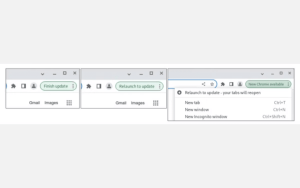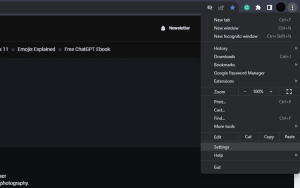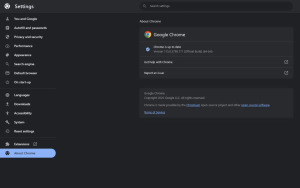1. Google’s Shift to Weekly Chrome Security Updates
As users increasingly rely on the internet for various activities, from communication to financial transactions, the need to protect sensitive data has become paramount. Google recognizes this urgency and has taken steps to be one step ahead of potential threats. The company’s decision to transition from bi-monthly to Weekly Chrome Security updates for Chrome is a clear testament to its commitment to user security.
2. Transitioning from Bi-Monthly to Weekly Updates

The announcement of Google’s new security update approach came in August 2023 through the Google Security Blog. Historically, Chrome updates were released every six weeks, a timeframe that was later shortened to bi-monthly updates. With the introduction of Chrome 116, users can now expect weekly updates that are specifically designed to block potential exploiters.

What’s reassuring for users is that this shift in update frequency won’t disrupt their experience or usage patterns. The only noticeable change is the increased frequency of security updates. Additionally, Google has introduced a new update notification feature to keep users informed. This update status notification appears in the green banner at the top-right corner of the browser window, providing users with a clear indicator of their browser’s security status.

3. Introducing the New Chrome Update Notification
The new update notification feature is designed with user experience in mind. Users can simply click on the notification message and then proceed to update by clicking the “Relaunch” option in the dropdown menu. It’s important to save any ongoing work before initiating the update. Even in Incognito Mode, where tabs may not restore after a restart, the same process applies.
For those who prefer a manual approach, checking the version of their Chrome browser is straightforward. By clicking on the Ellipsis menu (three vertical dots) at the top-right corner of the browser window and selecting “Settings,” users can navigate to the “About Chrome” section. Here, they can ascertain whether their browser is up-to-date or requires an update.
4. The Importance of Timely Updates and User Security
The foundation of Google Chrome lies on the Chromium platform, an open-source project that encourages collaboration and contribution from users. While this approach facilitates the testing of patches and identification of bugs, it also introduces a level of risk. Attackers can potentially exploit patch data, targeting users who haven’t installed the latest patches. This vulnerability, known as n-day exploitation, highlights the importance of timely updates.
With a shorter update gap, the window of opportunity for attackers to create an exploit is significantly reduced. Google’s move to release weekly security updates, on average 3.5 days earlier than the previous bi-monthly schedule, directly addresses this concern. It’s worth noting that high-priority exploits will continue to receive immediate attention and updates.
Conclusion,
Google’s commitment to user security is evident in its decision to transition to weekly security updates for Chrome. By proactively addressing vulnerabilities and minimizing the update patch gap, Google aims to enhance the online experience for its users. While the change in update frequency won’t disrupt browsing habits, users are advised to stay vigilant for update notifications, ensuring their Chrome browser remains equipped with the latest security enhancements. With this strategic shift, Google takes a critical step in maintaining a safer online environment for all users.










